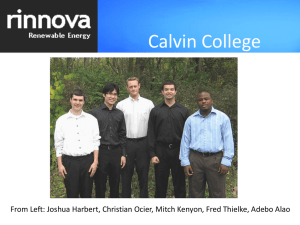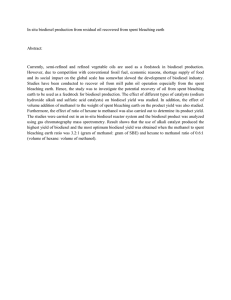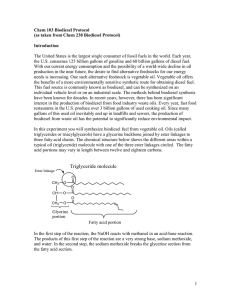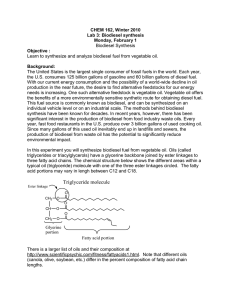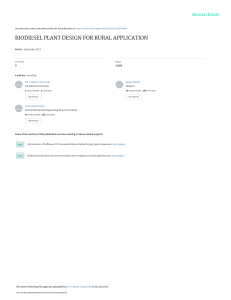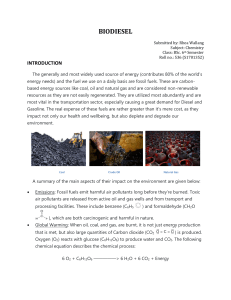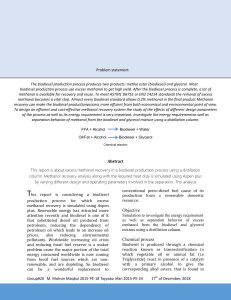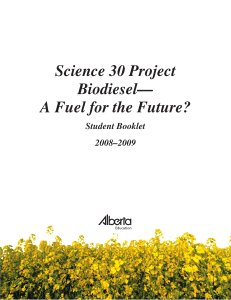Presentation - Final
advertisement
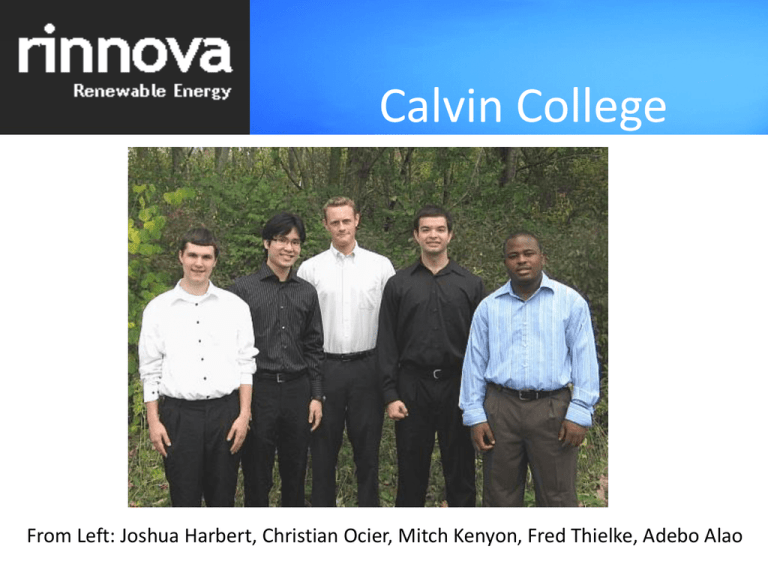
Calvin College From Left: Joshua Harbert, Christian Ocier, Mitch Kenyon, Fred Thielke, Adebo Alao Outline •Introduction •What – Project Overview •Why – Underlying Reasons •How – Description of Project •Chemical Process •Mechanical Apparatus •Conclusion •Acknowledgements •Questions Our Project Design and construct a process to convert waste vegetable oil into biodiesel •Cost-effective •Saves energy •Reduces pollution Why Are We Doing This? 1. We believe that: •There is a shortage of fossil fuel energy •There is no single answer to this problem 2. We also believe that the solutions will be dependent on: •Life style changes •Cultural and regional resource use •Sustainable/renewable energy 3. Education and good examples will be very important in solving this problem The Future of our Project Tentative plans for reactor •Donate to Calvin College •Campus Student Organization will operate reactor to fuel a campus commuter van •Provide the machine to a company considering investing in this sort of equipment Long Term Potential This process can be used to make high quality automotive fuel from a commercial waste product Possibilities for reactor •Donate to Calvin College for use in vehicles •Use it for feasibility tests with another company to improve current production methods The Biodiesel Production Process Chemical Overview • Two Reactions – The first reaction converts free fatty acids to biodiesel – The second reaction converts the rest of the oil to biodiesel – Both use an alcohol as a reactant Mechanical Overview • Four Subsystems – The filter cleans the waste vegetable oil (WVO) – The reaction vessel holds the reactions – The methanol recovery system helps keep costs and energy use low by helping reuse ingredients – The polisher helps to produce a very pure fuel by removing contaminants at the end Filter Waste vegetable oil is classified as garbage – and it starts out looking like garbage To make it work in our system, we have to clean it up: •Remove Water •Remove food remains Reactor Vessel Basic Components •Reaction vessel •Filter •Polisher •Pump •Agitator •Vacuum Pump •Methanol Condenser Purification After the reaction, there is some extra undesirable byproducts or unreacted chemicals that contaminate the biodiesel This is done in two stages: •Water washing •Chemical contaminant removal Methanol Removal System Vacuum Distillation: •Puts a vacuum on reactor vessel to help boil the alcohol at lower temperature •Methanol is removed and collected for later re-use •Uses much less energy than other systems •Sealed system ensures no toxic fumes leak Conclusion • Costs – It costs us less than half the price of diesel at the pump • Pollution – Biodiesel releases far less toxic emissions than regular “petro-diesel” Thanks and Acknowledgements •Energy Office of Michigan •Calvin College •The University of Waterloo •Mary Jo Pulte Questions?
